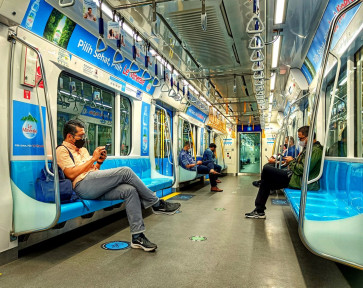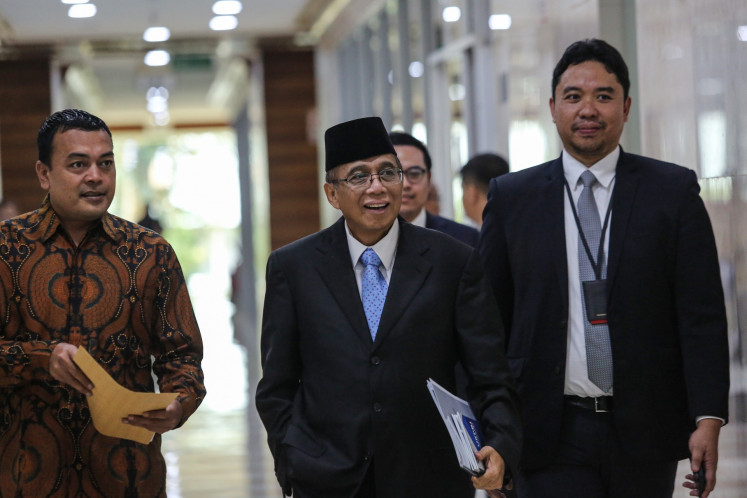Popular Reads
Top Results
Can't find what you're looking for?
View all search resultsPopular Reads
Top Results
Can't find what you're looking for?
View all search resultsTwilite Orchestra, creating identity in a foreign land
More than 50 years ago, Indonesia engaged in a huge debate over which music would represent our national identity
Change text size
Gift Premium Articles
to Anyone
M
ore than 50 years ago, Indonesia engaged in a huge debate over which music would represent our national identity. A group of intellectuals, mostly Javanese, proposed gamelan as representative.
This proposition was opposed by a group of musicians associated with classical academic practice.
In their 1952 book Music and its Problems in Indonesia, JA Dungga and L. Manic, representatives of this group, wrote: "We have learned to think and feel that we can act as fast and courageously as demanded by our situation and the world today, which is dynamic, full of upheaval, conflict, etc.
"We are accustomed to the problems of life and its solutions, accustomed to technology and scientific progress, etc. In music, the soul cannot be expressed by any indigenous musical tradition, from Javanese gamelan to the music of Sumatra or other islands."
The basic concept of our national identity as manifested in music was stated in 1951 by Bahder Djohan, then the minister of education and culture, as follows: "Our national music is the highlight of regional music."
Out of this debate came Amir Pasaribu, the pioneer of Indonesian academic musical practice. Instead of thinking of such things as gamelan or gondang, Pasaribu interpreted the concept of regional music as regional folksongs.
In the 1940s, Pasaribu began to compose piano music based on folksongs such as "Variasi Sriwidjaja" (Variation on the Theme of Gending Sriwijaya).
It was Pasaribu's type of music that was performed by the Twilite Orchestra (TO), Twilite Chorus and CIC Choir at the Sydney Opera House on July 21.
The event was presented with the full support of Sudaryomo Hartosudarmo, the Indonesian consul general in Sydney, and Sapta Nirwandar, the director general for marketing from the Tourism and Culture Ministry.
The repertoire was rich in folksongs and hymns in the form of orchestral music. Placed within the context of the wonderful acoustics of the main concert hall of the Sydney Opera House, the TO performance indeed demonstrated considerable accomplishment by an Indonesian symphony orchestra.
This level of quality could have never been achieved if they had performed in one of the multifunction halls of Jakarta not designed for such concerts.
In Sydney, the performance brought tears to many of the Indonesian expatriates who filled out most of the hall's 2,600 seats. This emotion was not only due to the rousing performance.
Indeed, for a long time - since Sukarno - many Indonesians have felt the lack of effort by the government in developing the issue of the nation building.
Because of its emphasis on economic development, Soeharto's regime failed to nurture the discourse of national and cultural identity, something that those who lived abroad felt the strongest. Therefore, Indonesian expatriates normally tend to socialize along the lines of ethnicity or religion.
Partito Soeharyo, the consulate staff member who worked behind the scenes of the TO's performance in Sydney, mentioned that he had had to work very hard to unite the 35,000 Indonesian expatriates living in Sydney. This was the first time he felt satisfied about the effort.
In other words, the significance of the TO performance went beyond a regular concert. In a foreign land, the TO strategy of performing music that deals with the issue of national identity seemed to work well.
The repertoire covered hymns such as "Indonesia Pusaka" (Ismail Marzuki), "Tanah Airku" (Ibu Soed) and "Rayuan Pulau Kelapa" (Ismail Marzuki); folksongs such as "Ondel-Ondel" (Jakarta), "Cublak-Cublak Suweng" (Central Java), "Janger" (Bali), "Yamko Rambe Yamko" (West Papua), "Paris Barantai" (South Kalimantan), "Pakarena" (South Sulawesi) and "Onde-Onde" (West Sumatra); and pop songs such as "Bengawan Solo".
The concert as a whole was presented under the title "Indonesia: A Touch of Harmony". Partito pointed out that this harmony was reflected in the audience, which consisted of Indonesian expatriates from a range of ethnic, social and religious backgrounds.
The entire atmosphere was similar to the celebration of Indonesian Independence Day abroad. Every single song played by the TO received spontaneous responses from majority of the audience who knew the songs well.
The high emotional atmosphere often had people applauding even before the songs had finished, something that would never happen in the regular classical music concert.
Indeed this was not strictly a classical music concert as Addie MS, the conductor, also brought with him pop singers such as Utha Likumahua and Jessica Mauboy, in addition to classical singers such as Binu Sukaman and Stephen Smith.
The concert was rather an exclusive Indonesian event. The quarter of the audience that consisted of non-Indonesians almost did not count. It was an affirmation of Indonesian nationalism. On the top of that, it promoted modernity as a discourse of nation building.
As it turned out, this issue proved to be more successful in raising appreciation for Indonesian music than any of the performances of ethnic music as normally presented by government troupes abroad.
In the context of globalization, it seems impossible to ignore the issue of commonality in reference and taste. Without sharing the same reference and taste, international audiences will find it hard to communicate emotionally with Indonesian musicians.
Then again, the majority of the audience was actually Indonesian-Chinese, who mostly do not associate with any indigenous musical tradition. This community also forms the majority of Indonesian diasporas across the globe.
Without appealing to them, any Indonesian cultural presentations abroad would not be able to attract a middle-class expatriate audience. These expatriates also have access to many local networks and communities.
Therefore, one of the most effective ways to promote Indonesia abroad for whatever purpose is to appeal to this community.
For this very reason, the TO visit to Australia was very important. For the purpose of reclaiming Indonesian national identity in a foreign land, the repertoire presented by the TO was perfect. Yet Addie MS also cleverly chose a standard classical concert piece in Colin McPhee's piece "Tabuh-Tabuhan".
McPhee composed this piece in 1936 based on Balinese musical elements. In doing this, the TO engaged in a serious artistic challenge as a professional orchestra. The task was especially carried out well by the two piano soloists, Johannes S. Nugroho and Levi Gunardi.
Otherwise, in the eyes of outsiders, the TO concert could simply fall into the category of musical propaganda. After listening to a few musical works that were arranged and orchestrated in the style of strictly classical tonal music, a senior Australian composer who came with me that night commented, "I feel like being in the post-war era".
Indeed, this is the next challenge for the TO and, by the same token, the Indonesian musical scene.
Provided with a high-caliber orchestra such as the TO and opportunities to perform internationally, Indonesia needs more sound musical compositions. Except for the late Yazeed Djamin, all of the musicians whose works were performed by Addie MS and the TO are arrangers, not composers.
From the perspective of 20th-century music, their works lacked any aesthetic appeal although they were skillfully orchestrated. In other words, they all sounded too conventional for an international stage and regular concert audience.
Some of them, for example Joko Lemazh in his Fantasy for Piano and Orchestra on a Theme of "Indonesia Pusaka", even seemed to be idiomatically and conceptually confused as the piece was written strictly in the style of a Beethoven piano concerto.
Normally, composition students do this only for the sake of technical exercise, not for published works. Yet, of course, at the end of the day, the decision to play this sort of musical style is in the hands of the conductor.










